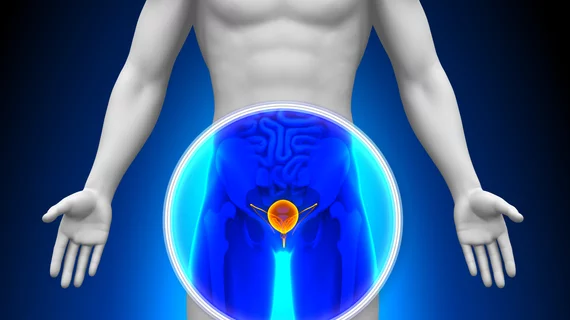New MRI technique 'lights up' prostate cancer
A new form of diffusion magnetic resonance imaging shows promise for the future of prostate cancer detection and treatment.
A study published recently in Scientific Reports put a new kind of correlated diffusion imaging (CDI), termed synthetic correlated diffusion imaging, to the test in a cohort of 200 patients with prostate cancer. Synthetic correlated diffusion imaging is said to make cancerous tissue “light up” in comparison to surrounding healthy tissue, and scientists involved in the study believe the innovative technology has exciting potential to improve prostate cancer screening, prognosis and treatment beyond the scope of current standard imaging practices.
“While diagnostic imaging has been increasingly prevalent for PCa screening and diagnosis, one can argue that there is currently no universally accepted method for screening and diagnosing prostate cancer via imaging,” corresponding author Alexander Wong, of the Ontario Institute for Cancer Research, and co-authors said.
The experts cited various imaging modalities—ultrasound, MRI and PET—currently used for prostate cancer detection, but noted there are special considerations that need to be made with each method, including financial, acquisition time and image quality barriers. To address these shortcomings, researchers compared their new imaging technique to current standard MRI methods (T2-weighted imaging, diffusion-weighted imaging) to analyze its efficacy for prostate cancer delineation.
“We introduce an extended variant of CDI we term synthetic correlated diffusion imaging, which leverages a hybrid of native and synthetic diffusion signal acquisitions and signal calibration for greater consistency in dynamic range across machines and protocols,” the authors explained.
Their comparison revealed the new MRI technique to be superior to the standard methods currently used for distinguishing clinically significant cancerous tissue from that which is considered clinically insignificant. This led researchers to conclude that the technique’s hypersensitivity on imaging is not only suitable for detecting the presence of prostate cancer, but also for assessing the degree of disease severity.
“This observation means that synthetic correlated diffusion imaging can potentially be a good clinical decision support tool for clinicians when compared to the current standard MRI techniques in determining the course of action for a patient, be it watchful waiting, active surveillance, or immediate treatment,” the authors wrote.
More articles on prostate cancer:
Specialized ultrasound can accurately detect prostate cancer, new research shows
MRI-guided radiotherapy for prostate cancer cuts treatment side effects in half
Is PET/CT or multiparametric MRI best for detecting prostate cancer? New research offers guidance
MRI-based prostate cancer screening paired with new blood test can reduce deaths by up to 9%

